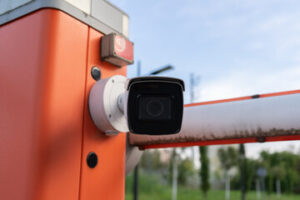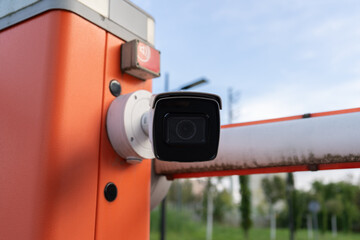License Plate Recognition Camera technology can help prevent crime, and improve security in public facilities. Examples are hospitals and museums and increased property protection for private sector businesses like real estate management companies.
The best options are rugged and vandal-resistant, with a tamper alert that lets you know when something has happened. They also feature various image quality and performance settings to meet any need or budget.
The best license plate recognition cameras deliver high-resolution images, which allow the camera to clearly read numbers and letters on vehicles’ license plates. These cameras also typically use features such as wide dynamic range and infrared illumination to ensure that the license plate is visible, even when there are shadows or glare on the vehicle’s windshield.
Many camera manufacturers boast about the ability of their megapixel cameras to capture images of license plates at a certain distance or field of view, based on their image resolution capabilities. But what they fail to mention is that the actual pixel density of the image is far more important than the number of pixels that are recorded.
The pixel density of an image determines whether or not the image can be analyzed and recognized by a computer software program. A low-resolution image will not be able to produce text that can be recognized, regardless of how many pixels are recorded.
To make sure that the pixel density of an image is adequate for the purposes of license plate recognition, there are a few factors that should be considered:
One of the most important is the location where the camera will be mounted. To perform at its best, the camera should be positioned so that it can see approaching vehicles directly head-on and that the distance from the plate is no more than 15 degrees in either horizontal or vertical planes.
Another factor is the lens and field of view capabilities of the camera. A DW LPR camera typically offers several different lens options to cover the range of distances that might be encountered at a choke point.
The final factor is the ability of the camera to manage image artifacts such as blooming and smear. These can interfere with the quality of the final scanned image and negatively affect the performance of an OCR algorithm.
Once the camera has captured a valid license plate, it will send the digital data to your NVR where it will be compiled into a database that can be searched and retrieved at any time. This is an important feature for remote security monitoring, as it allows on-call security personnel to quickly check the status of your business assets and respond to any potential threats.
Fast Shutter Speeds
When using a License Plate Recognition Camera, it is important that the camera shutter remains open for as short of a time as possible. A longer exposure can cause motion blur and reduce the chances of capturing usable images. To prevent this, installers should ensure that the camera is not pointed at a light source that will shine directly on the vehicle’s license plate.
Additionally, it is important that the frame rate (the number of frames per second) of the camera be as high as possible without sacrificing resolution. This will allow the camera to capture as many frames of a moving vehicle as possible, which increases the likelihood of the camera recognizing the license plate number.
In addition to the camera’s shutter speed, other technical specs that are important to consider are the image processing capabilities of a License Plate Recognition Camera. Specifically, plate localization algorithms identify the license plate and isolate it from the rest of the picture, sizing algorithms adjust the image to the correct size, and character segmentation algorithms convert printed characters into digital numbers and letters.
These image processing algorithms are vital for capturing clear and precise license plates, especially in challenging conditions. For example, some vehicles may have reflective paint that shines infrared light back toward the camera lens. This can throw off the ANPR software’s ability to translate the numbers and letters in the license plate and make them readable. To avoid this, a license plate recognition system should use an image processing algorithm that is capable of recognizing these types of variations in color and design.
ANPR stands for automatic number plate recognition, and it is a type of optical character recognition that identifies the numbers and letters on a license plate and turns them into digital data. ANPR technology is used by police departments, toll booths, and parking garages to log vehicle registration information and automatically open gates. Some Viewtron IP cameras have built-in ANPR, making them the perfect choice for parking security systems at gated communities. These cameras can scan a vehicle’s license plate, record the date and time of its entry into the parking lot, and take a photo of the vehicle before it is allowed to pass through the gate.
Fuzzy Matching
A license plate recognition camera (LPR) uses optical character recognition software to automatically recognize the characters on a vehicle’s licence plate and convert them into usable data. Unlike older systems that struggled with poor display quality, modern options are smart enough to overcome even small errors. They use a process called fuzzy matching to detect the plate number even when a single letter or symbol isn’t clearly displayed. For example, an O will be registered as a 0 rather than a missed attempt at a 5.
Getting the right specifications for your LPR system is crucial to ensure you get high-quality images every time. The best systems feature a wide-angle lens, low noise and an adjustable shutter speed to minimize motion blur, depending on the environment. They also support IR illumination to reduce the need for additional external lighting and improve performance in dim or low-light conditions.
While a wide-angle lens is critical, the positioning of your cameras is equally important. The optimal placement for a camera that can capture license plates includes a position directly looking at vehicles as they approach or exit the area and an elevation no higher than 15 degrees from the plate. You should also ensure there is ample ambient lighting to illuminate the plate in color mode. If you are using a mobile ANPR camera, this will mean mounting it in an area where vehicles come to a full stop or slow down to below 5 MPH.
To ensure a high level of accuracy, the images that are captured must first be normalized for brightness and contrast. This is followed by a segmentation process that separates alphanumeric characters from extra space and other elements in the image. The characters are then compared to the database of valid license plates to ensure they match.
This is an extremely important step as a single error can throw off the entire result. The best license plate recognition cameras offer searchable logs that allow administrators to easily access the video footage of each car and verify a proper reading. This will help you eliminate false positives and prevent the system from opening a gate or generating an alert for a vehicle that shouldn’t be on your property.
Multi-Camera Playback
Depending on the setup, license plate recognition cameras can utilize several cameras to improve the likelihood of successful capture. This helps eliminate errors resulting from physical installation such as exceeding threshold angles of incidence between camera lens and target license plate. Some cameras also employ head-light compensation (HLC) to reduce image distortion from the vehicle’s reflective surfaces such as mirrors or asphalt. Using true wide dynamic range (WDR) rather than software-driven digital WDR can also help equalize images taken in various lighting conditions.
Another feature to look for is the ability to adjust the capture area, allowing you to zoom in on a specific part of the license plate. This can reduce some false captures such as when a truck drives by with text, like company names or phone numbers on the side, that the software may try to recognize as a license plate number.
The frame rate of the camera is also important. Slower vehicles require a higher frame rate of 30 fps to be able to read the license plates, while faster vehicles need to be captured at 12-15 fps to be able to discern the characters on the plate.
Aside from being able to capture readable images of license plates, ANPR cameras are able to process the text and compare it against different databases such as WANTED or WRONGO lists, convicted felons, missing persons and more. If the text in the captured image matches with an entry on a list, the system can notify law enforcement in real-time.
Other features that can be beneficial are night vision capability and the ability to record video in color. This is particularly useful for situations in which it might be difficult to distinguish the colors of license plates due to glare or reflections on them.
Finally, the cameras should be durable and able to withstand a variety of weather conditions. Look for weatherproof, vandal resistant or impact-resistant ratings. Some top options even come with tamper alerts to warn users if the camera has been tampered with. This can be especially helpful if the camera is installed in an area that is vulnerable to tampering.

